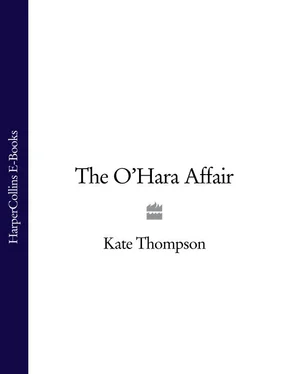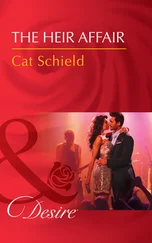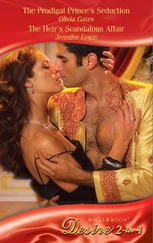The O’Hara Affair
Kate Thompson

In loving memory of my belle-mère , Hazel
Cover Page
Title Page The O’Hara Affair Kate Thompson
Dedication In loving memory of my belle-mère , Hazel
Chapter One
Chapter Two
Chapter Three
Chapter Four
Chapter Five
Chapter Six
Chapter Seven
Chapter Eight
Chapter Nine
Chapter Ten
Chapter Eleven
Chapter Twelve
Chapter Thirteen
Chapter Fourteen
Chapter Fifteen
Chapter Sixteen
Chapter Seventeen
Chapter Eighteen
Chapter Nineteen
Chapter Twenty
Chapter Twenty-One
Chapter Twenty-Two
Chapter Twenty-Three
Chapter Twenty-Four
Chapter Twenty-Five
Chapter Twenty-Six
Chapter Twenty-Seven
Chapter Twenty-Eight
Chapter Twenty-Nine
Chapter Thirty
Chapter Thirty-One
Chapter Thirty-Two
Chapter Thirty-Three
Epilogue
Points for Discussion on The O’Hara Affair
Acknowledgement
About the Author
By the same author:
Praise
Copyright
About the Publisher
Fleur O’Farrell felt foolish. She was standing in front of the wardrobe in her bedroom, regarding her reflection in the mirror. Fleur normally took real pride in her appearance – but this afternoon she was wearing a floral print skirt over flouncy petticoats, a cherry-red cummerbund, and a low-cut blouse. Her feet were bare, a silk shawl was slung around her shoulders, and great gilt hoops dangled from her earlobes. The crowning glory was the wig – an Esmeralda-style confection of synthetic black curls. She looked like a chorus member from a second-rate production of Carmen .
Her friend, Río Kinsella, had talked her in to playing the fortune-teller at the annual Lissamore village festival. Río usually took on the role herself, but this summer she was up to her tonsils in work, and had not a moment to spare. So Río had furnished Fleur with the gypsy costume, as well as a crystal ball, a chenille tablecloth and a manual called Six Lessons in Crystal Gazing . The flyleaf told Fleur that these words of wisdom had been published in 1928.
Turning away from the mirror, Fleur reached for the dog-eared booklet. The cover featured a bug-eyed gal transfixed by a crystal ball, and the blurb went: ‘Are you lacking in selfconfidence, unemployed or discouraged? Are you prepared for the future, or blindly groping in the darkness? Do you wish for health, happiness and success?’
Evidently not a lot had changed in the world since 1928. People were still asking the same questions, and still entertaining the same hopes and ambitions. Nowadays, however, instead of using crystal gazing as a means of self-help, people were unrolling yoga mats and sticking Hopi candles in their ears to assist them in their navel gazing. Much the same thing, Fleur supposed. Plus ça change, plus c’est la même chose…
A blast of hip hop drew her to the open window. A youth was lazily patrolling the main street of the village, posing behind the steering wheel of his soft-top and checking out the talent. Being high season, there was a lot on display. Girls decked out in Roxy, Miss Sixty, and Diesel promenaded the pavements and lounged against the sea wall, hooked up to their iPods, gossiping on their phones or browsing on their BlackBerries. Beautiful girls with gym-toned figures and sprayed-on tans and GHD hair, sporting must-have designer eyewear and designer bags to match. High-maintenance girls, whose daddies footed the department-store bills and whose mummies stole their style. Girls who did not know what the word ‘recession’ meant.
Lissamore was not usually host to such quantities of de luxe jeunesse dorée . The village was, rather, a playground for their parents, a place where those jaded denizens of Dublin 4 came to unwind for a month in the summer and a week at Christmas. Once the yearned-for eighteenth birthdays arrived, the princelings and princesses tended to migrate to hipper locations in Europe or America.
But this summer, because a major motion picture was being made in the countryside surrounding Lissamore, the village had become a must-visit zone. Wannabe film stars had descended in their droves after an article in a national newspaper had mentioned that extras were being recruited for The O’Hara Affair – a movie based on the back story of Gerard O’Hara, father to Scarlett of Gone with the Wind . An additional allure was the fact that the movie starred Shane Byrne, a local hero and Ireland’s answer to Johnny Depp.
The film was good news for the village during such a time of blanket economic gloom. Locals who had been made redundant since the collapse of the construction industry were being employed as carpenters and sparks and painters, hitherto jobless youngsters had been taken on as runners, and an ailing catering company had been given a new lease of life. Fleur’s shop had been honoured with several visits by the film’s leading lady, Río had charmed herself into being offered a gig as a set-dresser, and even Fleur’s lover, Corban, was involved – albeit it at a remove. He was an executive producer on The O’Hara Affair , and, while his artistic contribution to the film was negligible, his money talked. Because he had part financed the production, he, too, was due a credit.
‘Did he text back yet?’ It was a girl’s voice – a typical princess, to judge by the accent.
‘No,’ came the morose reply.
Craning her neck a little, Fleur looked down to see two girls sitting on the windowsill of her shop, Fleurissima, below. The girl with the D4 drawl she recognized – she had been in and out of the shop half a dozen times in the past fortnight, helping herself to pricey little wisps of silk and tulle paid for by Daddy’s gold Amex.
‘Did you put a question mark at the end of your last message?’
‘Yes.’
‘Shit. That means you can’t text him again, Emily. Like, the ball’s in his court now.’
‘I know. I should never have put the stupid question mark. He’s ignoring me, the bastard.’
‘How many Xs did you put?’
‘Three. But two of them were lower case.’
‘Ow. Three’s a bit heavy. I’d only put two lower case ones next time.’
‘If there is a next time. There was a comment from that Australian girl on his Facebook this morning.’
‘Uh-oh…’
Fleur felt like leaning out of the window and calling down: ‘Just pick up the phone and talk to him!’ But she knew that the rules laid down by mobile phone etiquette meant that picking up a phone was not an option. Fleur couldn’t understand how kids nowadays coped with the uncertainty, the insecurity, the emotional turbulence generated by the text messaging phenomenon. It must be a kind of enforced purgatory, sending texts toing and froing through the ether – like playing ping-pong in slow motion.
But Fleur was as in thrall to her phone as the girls on the street below, she realized, because when her text alert sounded she automatically reached for her nifty little Nokia. Accessing the message, she saw that it was from her niece, Daisy. The text read: Hey, Flirty! On my way now with cake & wine XXX
Because Fleur’s middle initial was T for Thérèse, Daisy had come up with the nickname ‘Flirty’ for her. Fleur loved it: it sounded so much more youthful and fun than ‘Aunt Fleur’, which was what her nephew called her.
Читать дальше













